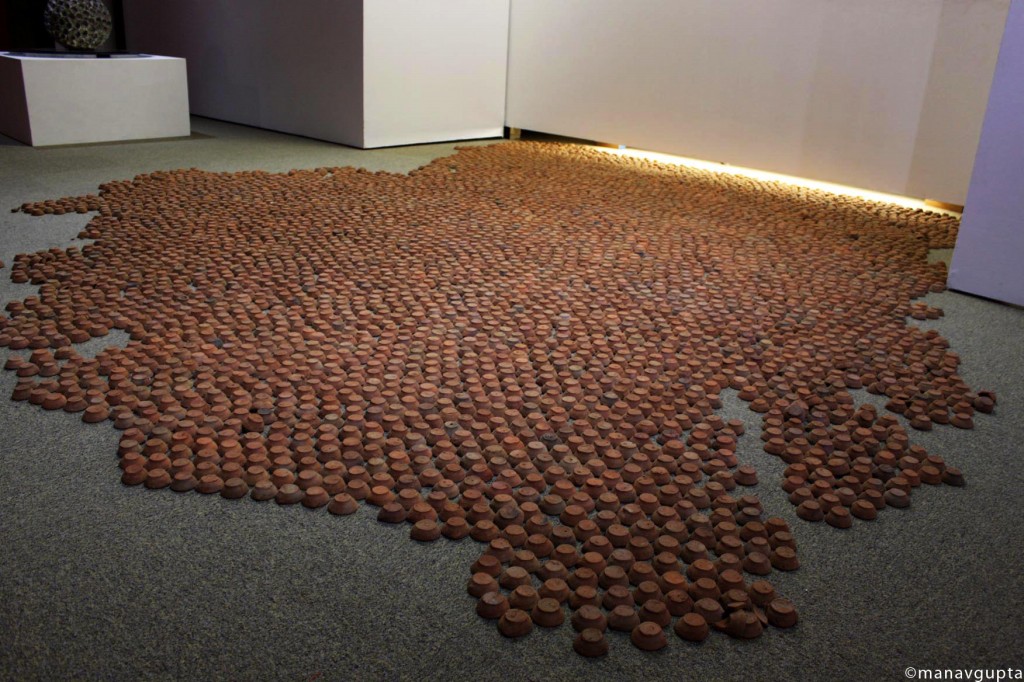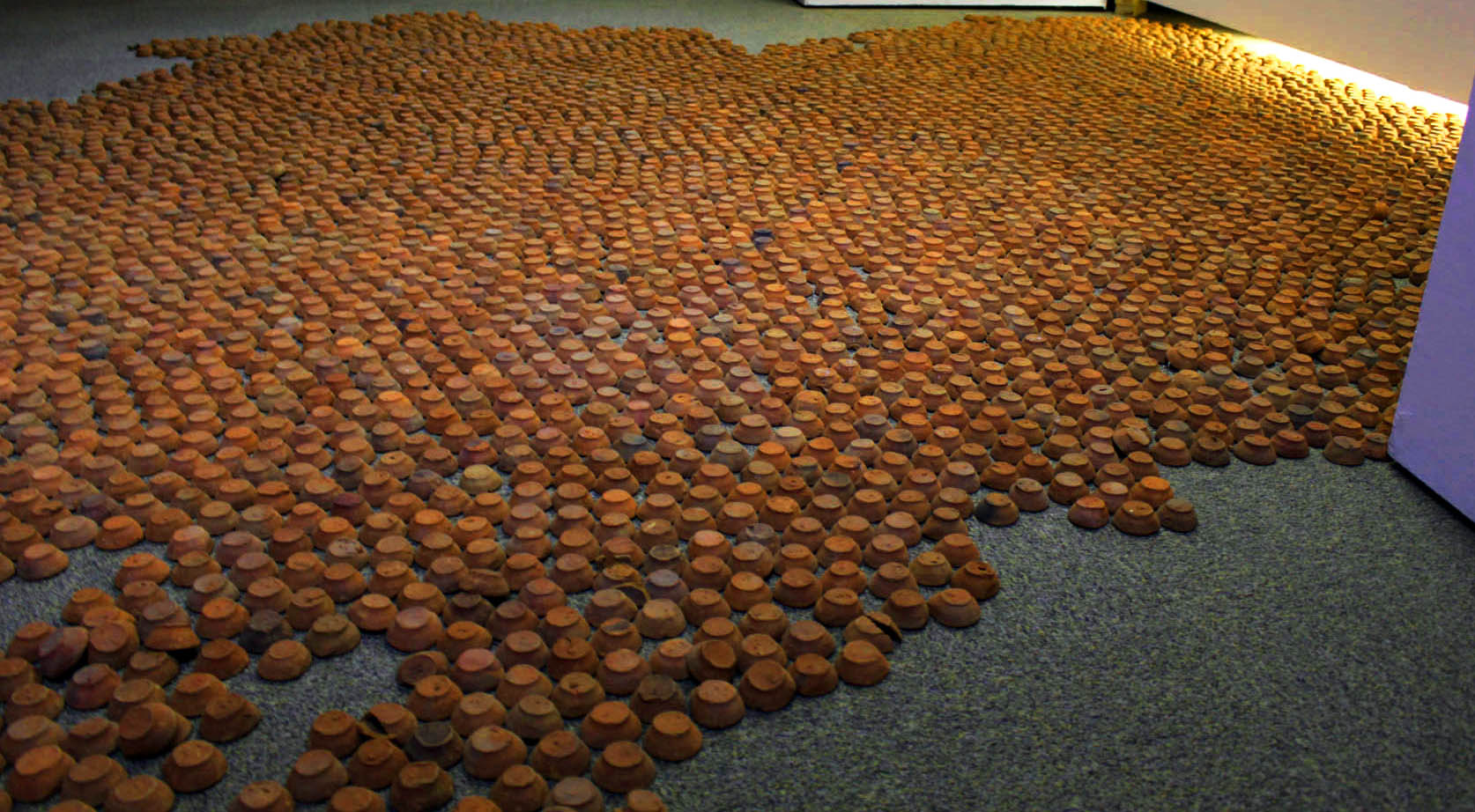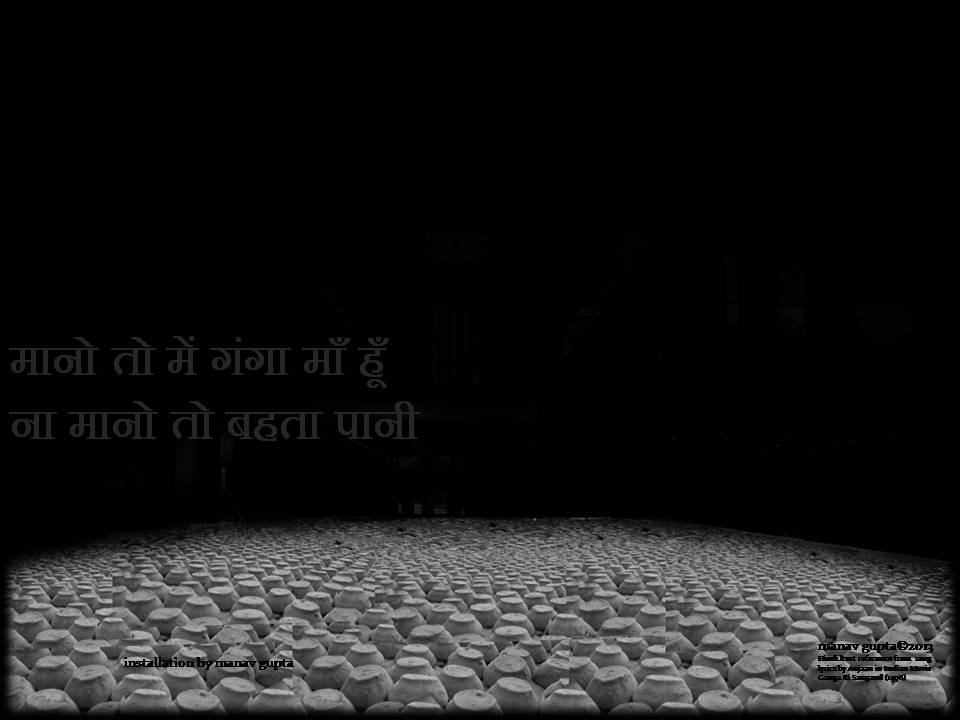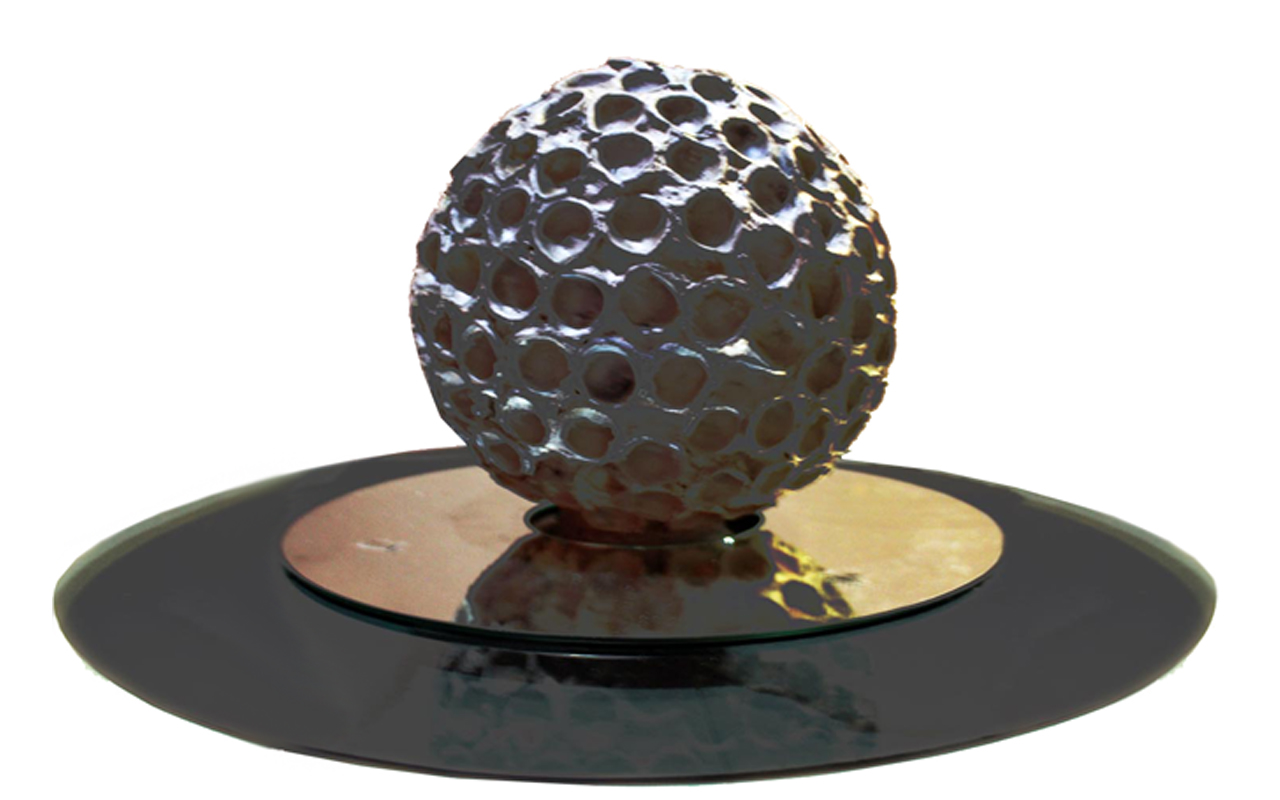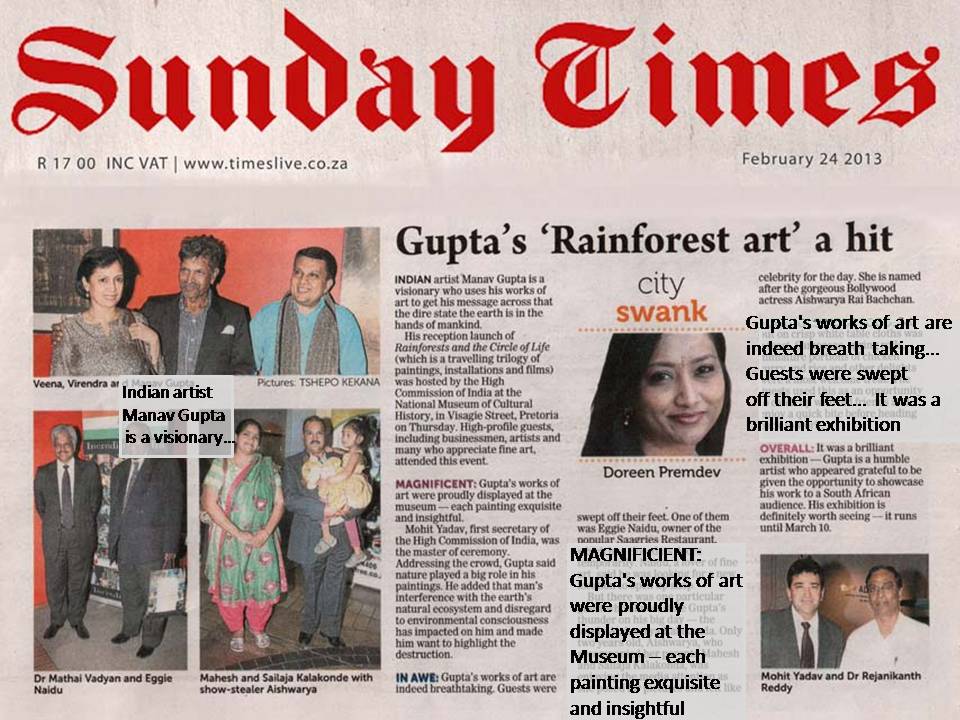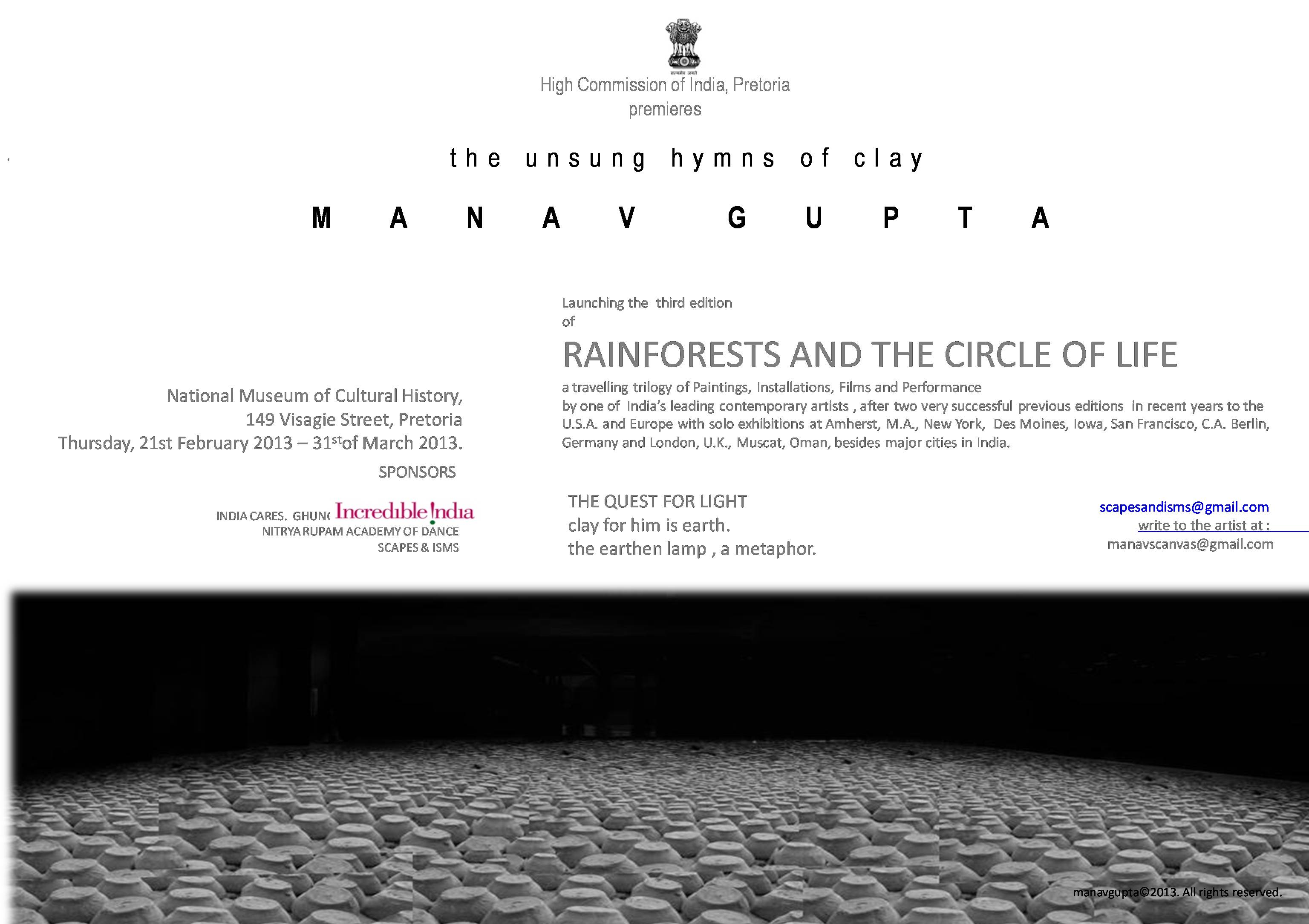essays, news, reviews
(i) ALL FOR EARTH : Gupta's recent mega installation uses earthen lamps as metaphors on environmental issues. In its entirety it can fill the Tate Turbine Hall. The artist has four entries in this year's Limca Book of Records. (i) Divya Kaushik, THE PIONEER
MANAV GUPTA's ‘UNSUNG HYMNS OF CLAY’ It represents the ability of imagination to combine with a symbol in a manner that is at once emotionally magnetic and resonant of the smell of the soil. Manav has elevated this humble piece of clay to an artistic pedestal with remarkable finesse. Its simplicity is breathtaking, but its meaning is multi-dimensional. Pavan K. Varma, AUTHOR, DIPLOMAT
"GUPTA'S GREEN TRILOGY : At a time when many artists turn to the west in desperate need for a brainwave, Gupta has universalised the diya - an inevitable fraction of Indian Culture - to draw attention to a contemporary issue.The installation is a metaphor where the earthen lamps signify earth."
Adila Matra, MAIL TODAY (i)
KALEIDOSCOPE OF CREATIVITY It is the use of Indian philosophy and spirituality that centers rather than dominates the work. The approach is contemporary. Light, and thus hope, is what drives his work in a metaphorical and practical sense. Diane de Beer, ARTS EDITOR, PRETORIA NEWS (i) GUPTA'S RAINFOREST'S ART A HIT Artist Manav Gupta is a visionary who uses his works of art to get his message across that the dire state of the earth is in the hands of mankind. Doreen Premdev, SUNDAY TIMES, (i) SOUTH AFRICA
Bibliographic Index
Essay by Pavan K. Varma, Manav Gupta's "unsung hymns of clay", April 13, 2013
Mail Today, Gupta's Green Trilogy, Friday April 26, 2013
The Pioneer, All for Earth, April 15, 2013
Sunday Times, Gupta's "rainforest art" a Hit, February 24, 2013
Tonight Art, Kaleidoscope of Creativity, February 28, 2013
Artslink, Rainforests and the Circle of Life, March 15, 2013
Biz community.com, Rainforests and the Circle of Life exhibition in Pretoria, February 28, 2013
Art focuses on Nature, March 14, 2013 Media Update,
Rainforests and the circle of life exhibition extended to the end of March, March 15, 2013 Record,
Spectacular India Culture hits the stage, 8 March, 2013 The Times,
Small wonders, February 22, 2013 Curtain Call,
Rainforests and the Circle of Life, February 19, 2013

Manav Gutpa's "unsung hymns of clay" by Pavan K Varma
Manav Gupta represents the artistic search for an authentic medium that is deeply rooted in the cultural ethos to which he is born. Exceptionally talented, especially in the startling, ingenious use of colour and light, Manav lives to push the horizons of expression without compromising the delicate aesthetic sensibility that is the hall mark of artistic fulfilment. I have known his work and his endeavours for many years now, and have been struck by his continuous effort to experiment with new forms of creativity, be it performance art in concert or his lyrical but powerful works on nature and forests. His most recent work ‘Unsung hymns of Clay’ has made a particularly strong impact on me. It represents the ability of imagination to combine with a symbol in a manner that is at once emotionally magnetic and resonant of the smell of the soil. The earthen lamp is a part of every home in India. It is a utilitarian vessel at one level, but a powerful vehicle of reverence at another. Its simplicity is breathtaking, but its meaning is multi-dimensional. It is easily accessible to all, and yet redolent with complexity. It is, perhaps, the one symbol that every India can identify with, and yet often, for this very reason almost taken for granted. Manav has elevated this humble piece of clay to an artistic pedestal with remarkable finesse. For him it is the bridge between the individual and the divine. It is prayer incarnate, yearning personified. It represents the soil, mother earth, the compact with nature. Its very fragility is a pointer to both the environmental crisis we are facing and the need to do something about it. Its versatility is a reminder that often the most beautiful things are part of our daily lives in a myriad ways and yet we are not conscious of the vibrations that imbue it. I am normally always a trifle sceptical about installation art. While some examples of this art are genuinely of calibre, many are about shock-impact and sterile gimmicry. Manav’s latest creation proves my scepticism wrong. By simply but imaginatively inverting the earthen diya he has created a work of art that cannot but deeply influence you. I was particularly struck by how he uses this clay vessel to show the plight of receding rivers, the shrinking domain of one our greatest natural assets, the unspeakable pollution and neglect of the Ganga, a river revered since the dawn of time by all Indians. One cannot stand before his installation and not be seized by an array of emotions, which taken together make a deep emotional impact, and sifted apart are about the earth, prayer, nature, rivers, human search and divine benediction. I wish that more and more people see this installation and pause in the midst of their many preoccupations to absorb the beauty and symbolism of what he has created.
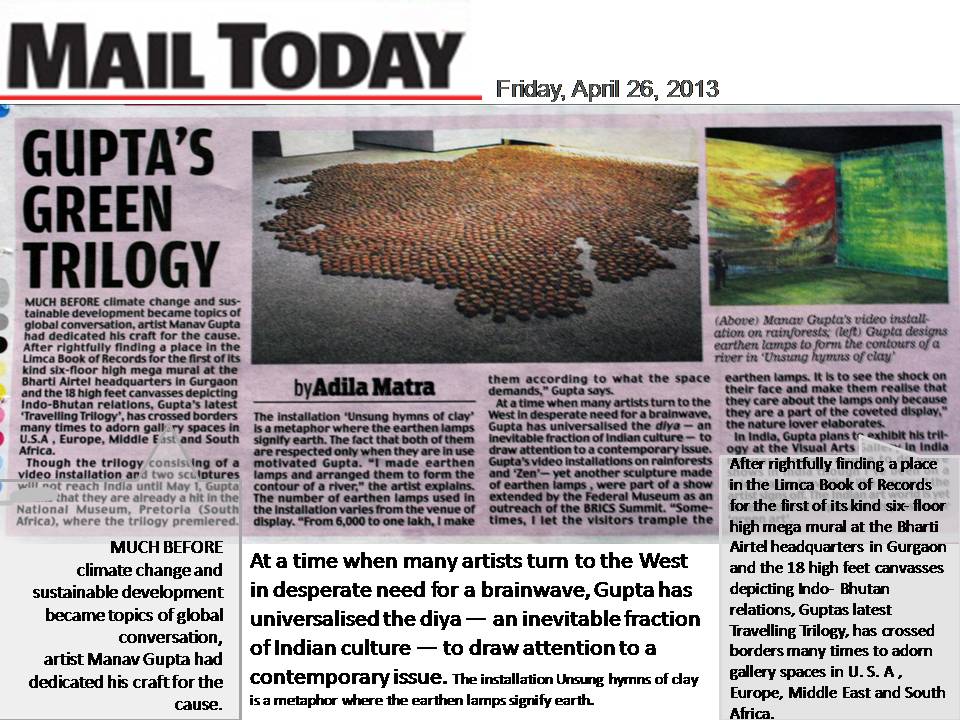
Manav Gupta’s recent mega installation uses earthen lamps as metaphors on environmental issues. The artist has four entries in this year’s Limca Book of Records. He spoke to D Kaushik
He is known for kingsized murals. The six-floor high, 5000 sq feet in façade and 10000 sq foot painted surface of a mural at the Airtel headquarters in Gurgaon, is among his more prominent works. Gupta employs a contemporary artistic language used to spread a message about environment conservation. He remarked, “I respect and love the earth and nature. And I have always tried to create awareness concerning environmental issues. I have worked in this field for many years. I grew up with nature and this reflects in my work.” Gupta’s latest exhibition is called
Unsung Hymns of Clay.Currently showcasing in Pretoria, the capital of South Africa, it features a large installation calledRiver of Clay, which uses earthen lamps as metaphors for Indian spirituality, conveying how we use the earth to our advantage. Manav explained, “While growing up, I saw earthen lamps lying in heaps. They always seemed non-descript. But the same lamps, when lit at the altar for prayer, took on different meaning. They are considered sacred, but we discard them after their purpose is served. I used them as a metaphor for Earth. We connect to her but damage and exploit her too.” He added, “It is believed when you use
for worship of the lord, you do not have to purify the mud bowls with holy Ganges water, because they already are pure. Oil is poured and the wicker lit is holy. But when prayer is complete the lamp is discarded. So the title,Unsung Hymns of Clay.”He also references the pollution done to the river Ganga.The installation with over hundreds of earthen lamps appears as a flowing water from the distance. The inverted lamps are arranged in neat, but flowing sequences. In its entirety it can fill the Tate Turbine Hall. “I have given a language to the lamps, which is minimalistic yet dramatic,” he added. Manav just returned from South Africa after the High Commission of India hosted the premiere and launch of the third edition of his travelling trilogy at the National Museum there, after two successive previous editions in recent years in US, Europe and the Middle East. It was extended by the Federal Museum, as an outreach during the BRICS Summit. “As the exhibition focusses on sustainable development, human responses to the environment and man’s role in climate change and other environmental hazards faced, the duration of display has been extended,” informed Gupta. He took over a year to complete the installation and plans to show it in India too.
